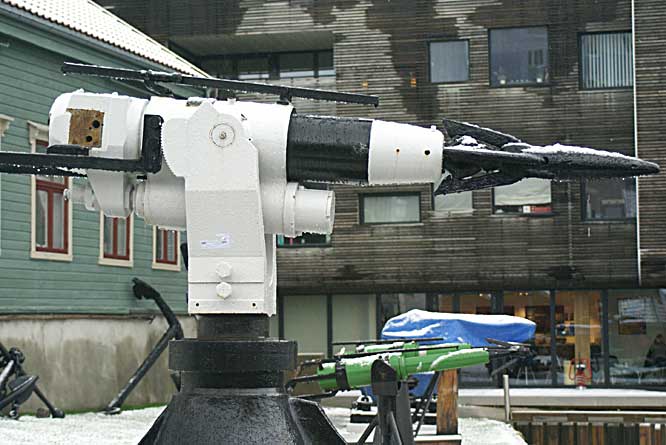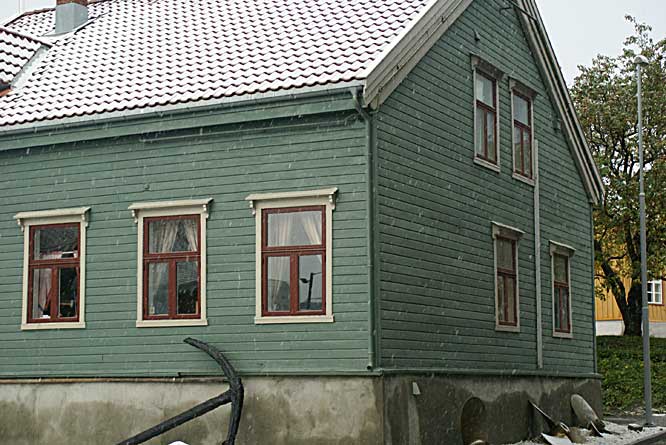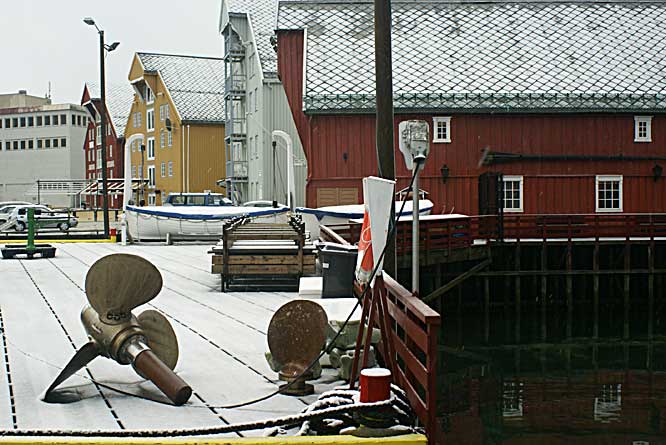Tromso Polarmuseet in Norway
Tromso Polarmuseet is in the old Customs Warehouse - The wharf-side building was originally built as a warehouse for the Customs Service. It was used to store items awaiting customs clearance. The wharf-side building was originally built as a warehouse for the Customs Service

It was used to store items that were waiting to be custom cleared. The building's base is on wooden poles on the sea shore - and the sea flows freely underneath. The walls are cog joined and are covered with vertical wooden panels. The roof has a conventional design and is tiled with cut slate and roofing bricks.
The building is 29.8 metres long and 9.8 metres wide. It originally had a chimney, but this has been removed. The building originally comprised of two storeys and a loft. The loft has now been adapted so the building has two and a half storeys. One of the long sides has a corridor in the timber framework. The gable facing the sea has an arch with a winch and large double folding doors on each level.

The north-facing extensions, added in 1843, are cog joined and panelled the same height and width as the original building. A couple of minor additions have been added in later years with vertical panels, including an annex being converted into a toilet and cloakroom for the Polar Museum.
As early as 1800, the Customs Service got its own boathouse, while the warehouse was built in 1833. The warehouse was extended in 1843 by builder J. C. Berg. When the Customs Service closed down its operations in the Skansen area, the warehouse was rented out as a storage facility. The Polar Museum took over the building in 1978. The building was restored and fitted out before the museum reopened in 1986.
Customs Boathouse - The boathouse was constructed around 1800. The boathouse or sea house is now located behind the warehouse. The current boathouse originally had an earth floor. The boathouse was constructed around 1800. The boathouse or sea house is now located behind the warehouse.

The current boathouse originally had an earth floor and had a timber frame with exterior vertical cladding. The roof is supported by rafters of the same height. It was originally tiled with roofing bricks, but is now tiled with concrete roofing stones.
The boathouse did not have windows. The boathouse's northern side contained a large port opening, which had earlier been a double folding boathouse door. The foundations consist of a thin layer of stone. The boathouse was extended in 1994 and is now part of the Polar Museum's exhibition space.
Travel books

